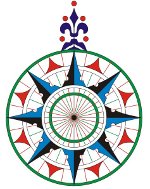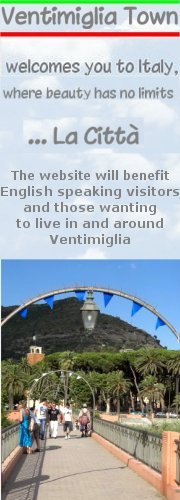General Articles
The Wind Rose
The weather in the whole of Europe has been cause for endless complaints this year, starting with the Arctic winter direct from Russia and continuing to mid July with a level of humidity that all on the Riviera agreed was far from normal. The normal azure skies were replaced by a pale blue haze, and any visitor to a location more than a few kilometers inland was asking "Where's the sea view then?". The horizon was mostly barely visible even from the water's edge. It's all the fault of the wind, of course.
Here on the Mediterranean the wind may blow from any direction but each has its own characteristics and in this region at least eight of the directions have names. The set is commonly represented as a diagram called a "wind rose", originating in ancient Greece and laid out formally by Italian mariners.

So what are these directions, what are the winds called and what is special about each one?
| North | Tramontana |
(French: Tramontane) A cold wind from the Alps and Appenines to the north, most frequently in winter. In a Victor Hugo poem the main character is quoted as saying "Le vent qui vient à travers la montagne me rendra fou.." ("the wind which comes across the mountains would drive me mad.") (As an aside, the northerly wind in Norfolk is known as the "lazy wind" because it can't be bothered to go round you. Obviously a similar phenomenon.) |
| North-east | Grecale | A north-easterly wind, also known as the Bora, which has been known to exhibit gusts of over 200km/hour and is the reason so many Italian village houses have stones on their roofs - to prevent the tiles blowing away. A strong Bora is a news-worthy event. |
| East | Levante | Best known in the Strait of Gibraltar, where this wind is responsible for characteristic cloud formations over the Rock. The Levante blows mainly in summer and brings fog and precipitation to the western Mediterranean. |
| South-east | Scirocco | The Scirocco rises in the Sahara and mixes with moist cyclonic Atlantic air to cause storms in the Mediterranean and cold, wet conditions across Europe. It's also famed for dumping huge quantities of Saharan dust across wide areas of the continent |
| South | Ostro | (French: Marin) The Ostro is a warm, humid wind that often carries rain. It's caused by warm fronts from a depression in the region. |
| South-west | Libeccio | The Libeccio, originally named after Libya, is most common in summer and is the predominant wind in Corsica all year round. It brings warm, dry conditions and is a signal in many parts of Italy for the harvest to begin. |
| West | Ponente | The Ponente is a warm, dry wind that blows along the western Mediterranean coastline |
| North-west | Maestrale | The Mistral is a cold, unusually dry and often strong or even violent wind that confers an important role in the characteristic climate of Provence. For this reason it is known in parts of Italy as the "Provenza". |
So we can probably blame one of the easterly winds for the unusually moist conditions we experienced earlier in July.



